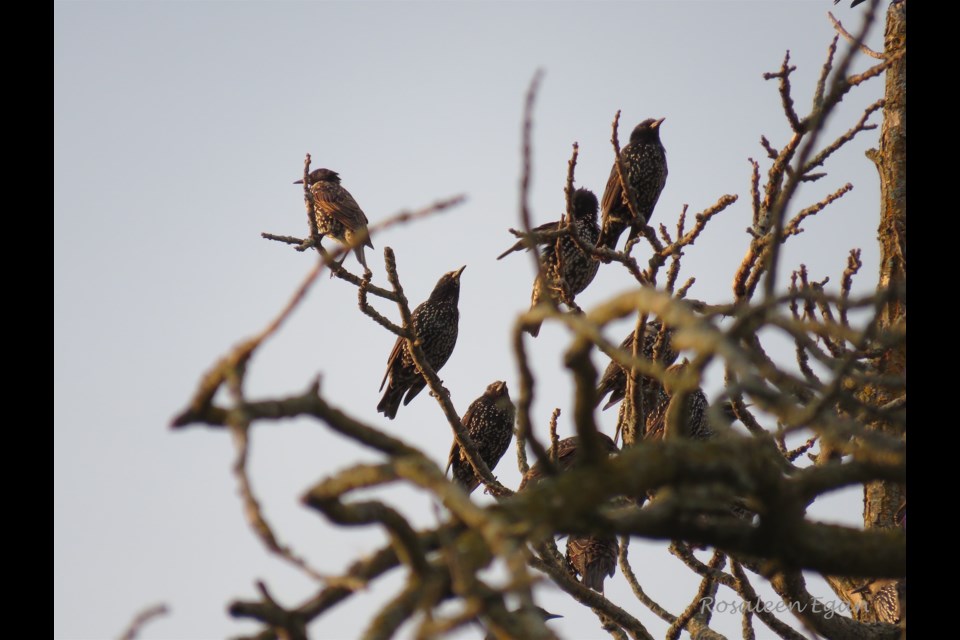The European Starling is not everyone’s darling, yet it can be dazzling in its plumages. Its characteristic flock acrobatics known as murmuration is fascinating. As a nonnative species, some consider it a pest. It can be threatening to native species and eats almost anything.
In the summer, although they appear black, starlings are iridescent with purple and green highlights. As we enter another season, their plumage changes to a brown, with bright white spots.
They have begun to form large flocks now after mating season and as cooler weather moves in. Starlings are generally non-migratory although some do move further south. Lately, there is boisterous group that comes together around 7pm to hang out in the dead ash trees.
Their chattering drowned out my conversation with a neighbour one evening last week. Suddenly, the went completely silent and still. Did something in our conversation catch their attention? Their pause made my neighbour and I pause. And then we all started up again at the same time moments later.
According to allaboutbirds.org, they have confrontations with each other that “can escalate into birds charging at each other and stabbing with their long bills. Birds on wires may push others away by sidling along the perch until they’ve run out of room”.
The site goes on to say, “Starlings are extremely aggressive birds that drive other species from nest sites they want to use. Among the species they’ve chased off are Wood Ducks, Buffleheads, Northern Flickers, Great Crested Flycatchers, Tree Swallows, and Eastern Bluebirds.”
This aggressiveness, does not seem to have strong effects on populations of 27 native species in a study. “Only sapsuckers showed declines due to starlings; other species appeared to be holding their own against the invaders,” says allaboutbirds.org.
In the spring, I had starlings try to get into the bluebird boxes I have, but the entrance is made intentionally small to avoid that possibility.
Starlings are common and widespread across North America, although their numbers declined 52% between 1966 and 2015, according to the North American Breeding Bird Survey.
“All North American starlings are derived from 80–100 founders released in 1890 and 1891 in Central Park, New York City. This was sponsored by an acclimatization society headed by Eugene Scheiffelin—an effort to introduce all the birds mentioned in Shakespeare's writings,” according to birdsoftheworld.org. There is a reference to a starling in Henry IV.
This same society is responsible for introducing the House Sparrow, another Shakespearean bird, to North America. The Eastern Bluebirds here fought hard and won against the House Sparrows in the battle of the bluebird boxes described in an earlier post.
Starlings and House Sparrows may be found foraging together. Perhaps they recite sonnets to each other. Allaboutbirds.org also lists grackles, cowbirds, blackbirds, Rock Pigeons, American Robins, and American Crows as foraging mates. I have seen all of these together on the lawns here. Starlings can put their long beaks into the soil, and open their mouths to widen the gap to reveal bugs.
Although not everyone welcomes them, and it can be hard to get a word in edge wise, I appreciate the wonder of their large groupings, and I find the dazzle of their plumage at suet feeders brightens a winter’s day.
I share experiences of bird visitors to this property with readers every couple of weeks. Until next time, keep your eye to the sky, and look for birds that may come by.
Rosaleen Egan is a freelance journalist, a storyteller, and a playwright. She blogs on her website rosiewrites.com



